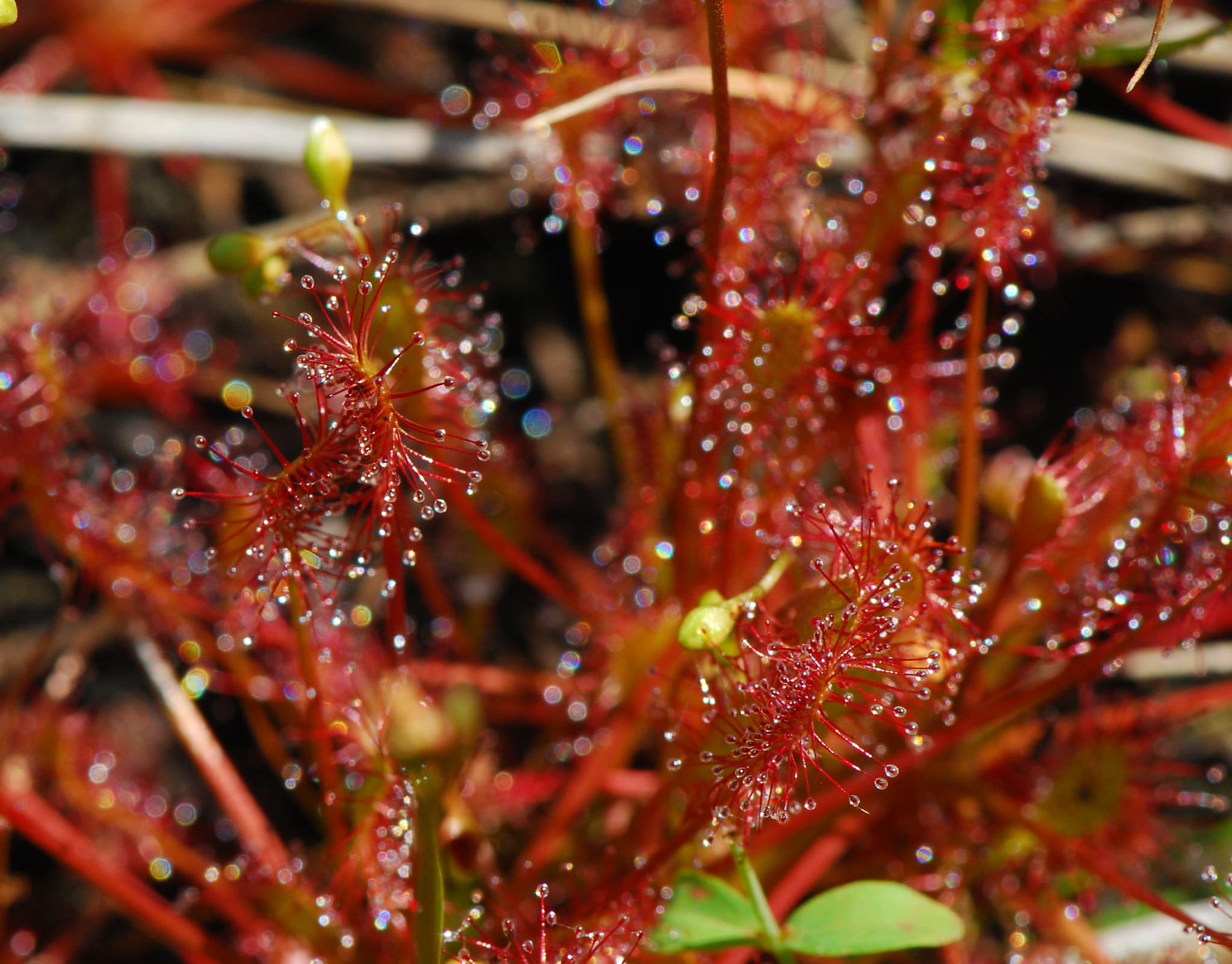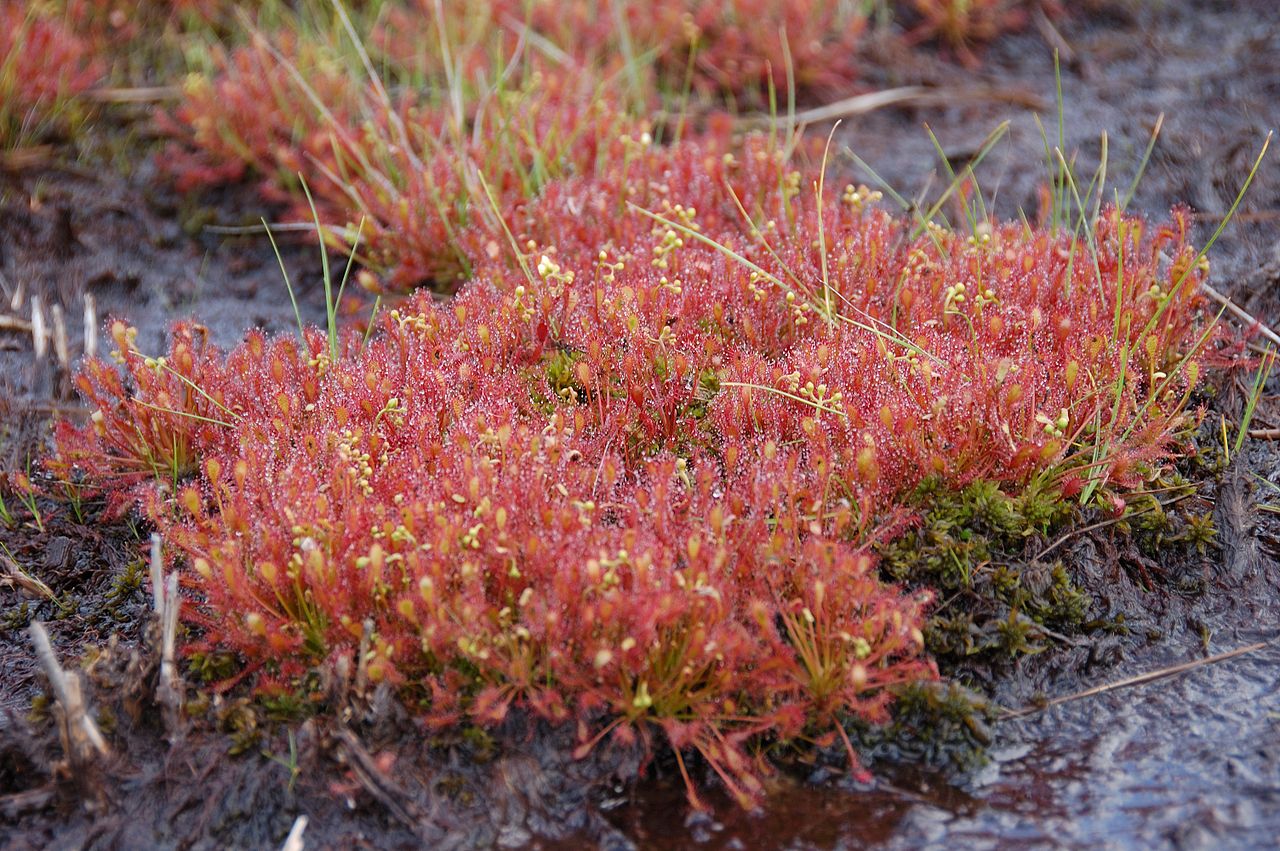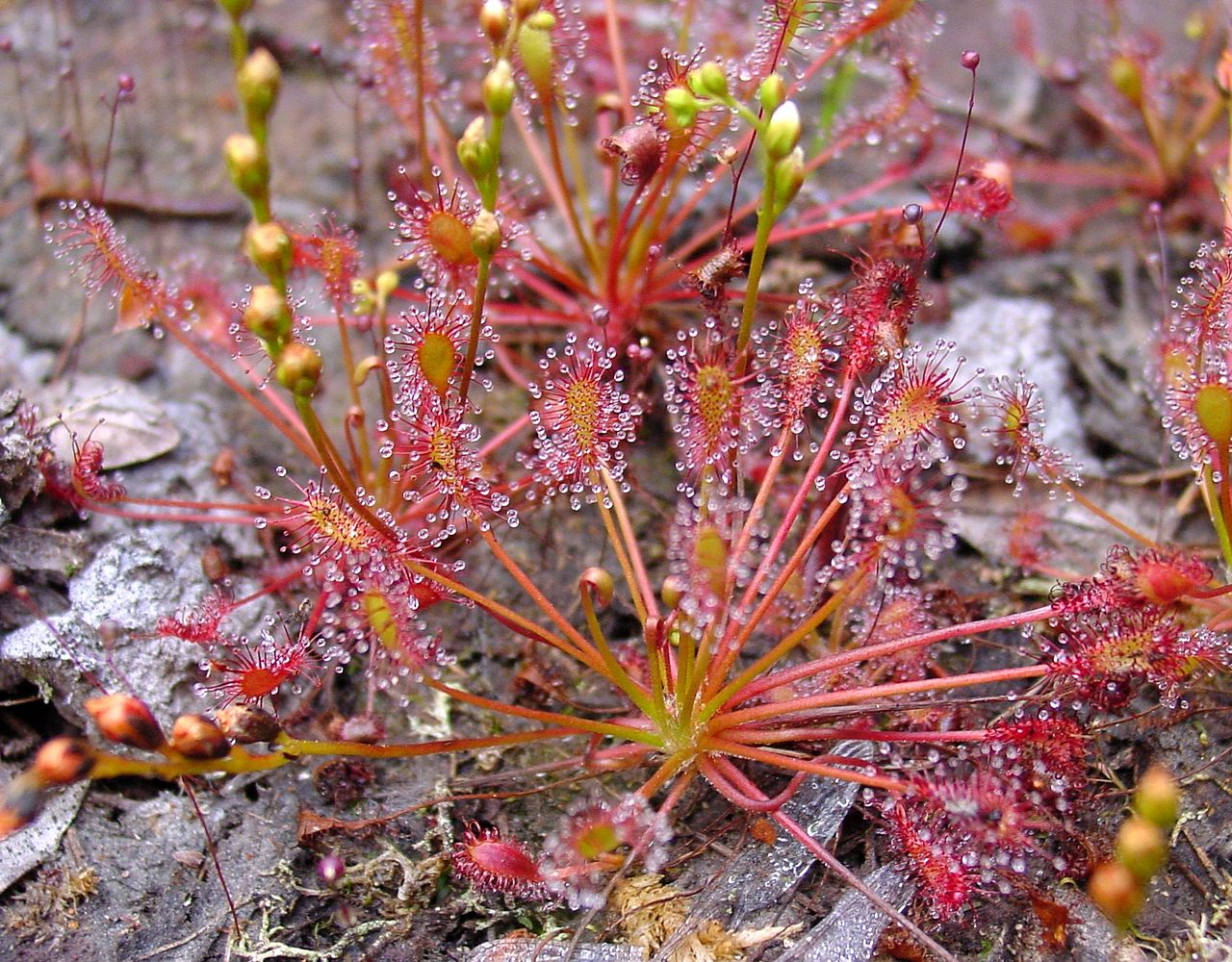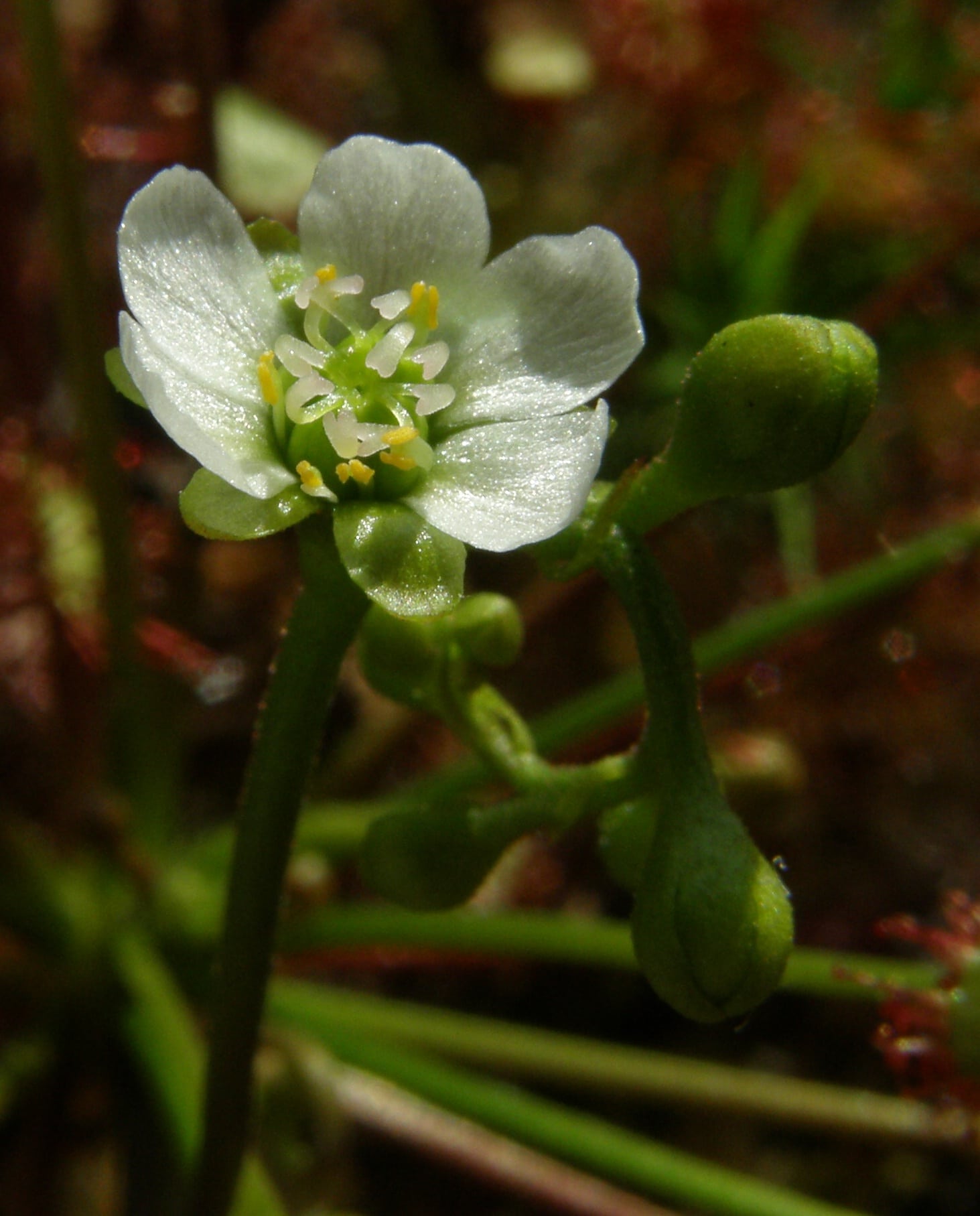
Image - Flickr / Joshua Mayer
Carnivorous plants have always piqued the interest of many humans. Unlike most plant beings that we are used to seeing, they obtain a good part of their nutrients by feeding on the insects that fall into their traps. One of the most common but no less beautiful is the Intermediate sundew.
Its red color and the way it grows attracts so much attention that we could almost think that it is an artificial plant. Although fortunately, it is natural. In fact, is often grown on balconies and terraces, because by not growing much with a small pot it will be very comfortable.
Origin and characteristics of Intermediate sundew

Image - Wikimedia / Michal Rubeš
La Intermediate sundew is a herbaceous, perennial and carnivorous plant native to temperate regions of Europe, as well as eastern North America, Cuba, and northern South America, belonging to the genus Drosera. In these last two places, where the climate is tropical, it does not form hibernacles (primitive structures that protect the stem) during the winter because it does not need it.
Forms a rosette of spatulate leaves up to 10 centimeters high. These leaves are covered by glands from which mucilage (transparent liquid, very sticky for insects) sprouts. As a good carnivore, it also secretes enzymes from the sessile glands that will digest those that have not been able to escape.
It produces 3-8 white flowers that come out from a stem up to 15 centimeters tall in summer (June to August in the Northern Hemisphere). Maintaining a certain distance between the traps and the flowers is vital for the plant, since it needs both to eat and to produce seeds. These are very, very small, and are oval in shape.
What are the care it requires?
La Intermediate sundew it is a relatively small plant that, well cared for, will live for several years. In addition, the seeds germinate easily in the same pot, so as soon as you expect it, you will have a lot of little plants, which you can separate - carefully, of course - and plant in other pots, or leave them with their parent.
Its flowers are also small, but very Monas as we Spaniards say, a qualification that translates as pretty. So, although we will not be able to make bouquets with them, it will be easy to enjoy their beauty and that of the insects that it attracts, including bees. But how do you take care of it?
Location
- Body exterior:: it must be placed in semi-shade, in a bright area but without direct sunlight at any time.
- Interior: if you can get a specific lamp for plant growth (in this link sell), it is sure to grow wonderfully.
Irrigation

Image - Wikimedia / NoahElhardt
Irrigation of the Intermediate sundew must be rather frequent. During the summer you can put a plate under it and fill it with water, and the rest of the year water once or twice a week.
Use rainwater or distilled water, or failing that, water suitable for human consumption whose dry residue is equal to or less than 200 (such as Bezoya's for example).
Substratum
It is grown in plastic pots with holes in the base filled with cloudy blonde mixed with pearlite in equal parts (on sale here). Sphagnum moss is also used.
Subscriber
Do not fertilize carnivorous plants. If it is done, its roots will suffer irreversible damage and will be lost. In the event that they are fertilized by mistake, remove them from the pots and wash the roots well with distilled water. Then, plant them in a new pot with new substrate, and water with distilled water.
Multiplication
To multiply the Intermediate sundew the best thing to do is… do nothing 🙂, or almost nothing. As we mentioned before, the seeds that fall on the substrate germinate, and once they do, the seedlings grow at a good rate. Therefore, as soon as they measure about 2-3 centimeters you can separate them for example with a spoon and plant them in individual pots.
Now, if you have bought seeds, sow them in spring-summer in a pot with peat moss mixed with perlite, ensuring that they are covered with a thin layer of substrate, simply so that they are not carried away by the wind. Keep this substrate moist but not waterlogged, and if all goes well they will germinate in one or two weeks.
Transplant
During its youth and until it reaches its final size may need two or three pot changes. If you see that roots are growing out of the drainage holes, or if it has already taken up all of it, move it to a slightly wider one in spring.
Rusticity
It resists the cold but the frosts harm it. Ideally, it should not drop below 0 degrees, but if -1,5 or -2ºC are recorded in a timely and brief way, rising rapidly above zero degrees, the damage will be minimal. Even so, to avoid risks, if there is frost in your area, do not hesitate to put it in a greenhouse or indoors.

Image - Flickr / Rosťa Kracík
What did you think of Intermediate sundew?
very pretty
Yes it is. Thanks for comment.